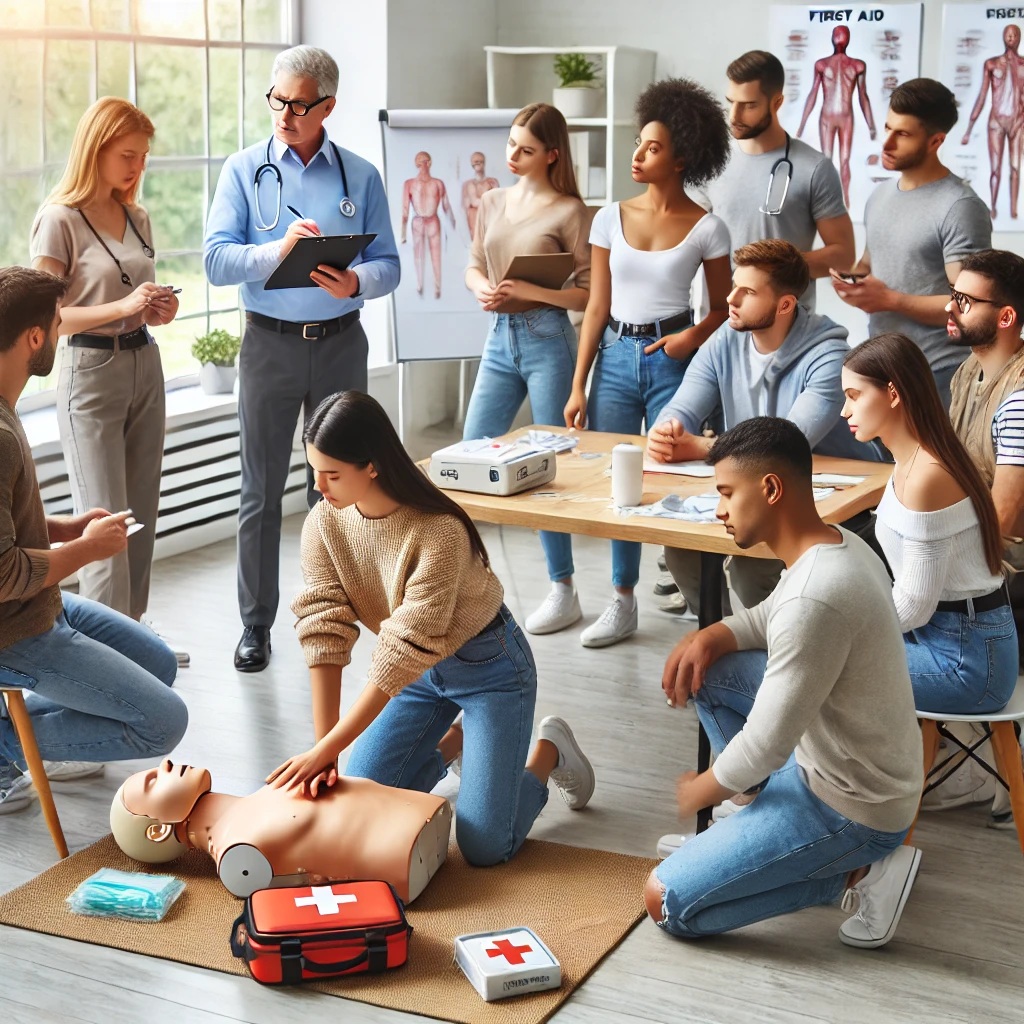
Introduction:
Emergencies can strike anytime, anywhere, and preparedness is key to saving lives. Teaching children first aid and cpr training them to respond effectively in critical situations. Whether it’s helping a friend who has fallen or assisting during a medical emergency at home, children equipped with these skills can become valuable first responders.
Why First Aid and CPR Training is Beneficial for Children ✅
1. Enhances Confidence and Responsibility
- Children learn to take charge during emergencies rather than panic.
- Builds a sense of responsibility towards others’ well-being.
2. Encourages Early Understanding of Health
- Familiarizes children with basic human anatomy.
- Promotes awareness of health and safety practices.
3. Life-Long Skills
- These skills stay relevant throughout life, making them invaluable in adulthood.
4. Prepares for Real-Life Scenarios
- Kids can assist in choking, bleeding, or cardiac emergencies.
- Provides essential knowledge for outdoor adventures, sports, and community activities.
Challenges in Teaching CPR and First Aid to Children 🧠
1. Attention Span
- Younger children may struggle to stay focused during training.
- Solution: Use interactive and fun methods like role-playing or animations.
2. Physical Limitations
- Performing chest compressions can be physically demanding.
- Solution: Teach age-appropriate methods and emphasize calling for help.
3. Emotional Readiness
- Some children might find emergency scenarios overwhelming.
- Solution: Instructors should ensure a supportive and non-frightening environment.
Key Components of First Aid and CPR Training for Children 🩹
1. Recognizing Emergencies
- Identifying symptoms of common emergencies like choking or fainting.
- Understanding when and how to call emergency services.
2. Basic Techniques
- CPR: Performing chest compressions and rescue breathing on mannequins.
- Wound Care: Cleaning, dressing wounds, and controlling bleeding.
3. Choking Relief
- Methods for dislodging obstructions, particularly in children and infants.
4. Staying Safe
- Ensuring personal safety while helping others.
- Avoiding further injury to the victim.
How to Implement CPR and First Aid Training for Children 🧑🏫
1. Schools as Training Hubs
- Incorporating first aid and CPR into the school curriculum.
- Hosting workshops or events with certified trainers.
2. Community Programs
- Partnering with local organizations to offer free or subsidized training.
- Holding family-focused sessions to engage parents and children.
3. Age-Appropriate Materials
- Tailored lessons for different age groups:
- Ages 5–8: Focus on calling for help and simple first aid.
- Ages 9–12: Include basic CPR techniques and first responder actions.
Success Stories: Children Saving Lives 🏅
There are numerous inspiring cases of children successfully applying first aid and CPR. For example, an 11-year-old boy in Texas saved his baby brother from choking by using techniques he learned at school. These stories highlight the life-saving potential of early training.
Conclusion: Empowering the Next Generation 🌈
First aid and CPR training are not only suitable but essential for children. These skills instill confidence, prepare them for real-world situations, and foster a culture of care and responsibility. While challenges exist, they can be addressed with innovative teaching methods and supportive environments. Let’s invest in empowering the next generation to save lives.
FAQs: First Aid and CPR Training for Children ❓
1. At what age can children start learning CPR?
Children as young as 5 can start learning basic first aid concepts, while CPR training is more effective for those aged 9 and above due to physical requirements.
2. Are there certifications available for children?
Yes, many organizations, such as the Red Cross, offer certifications tailored for children.
3. How can parents support first aid training?
Parents can reinforce lessons at home, practice scenarios, and model calm and effective responses during emergencies.
4. Is training mandatory in schools?
While not mandatory everywhere, many schools and states are incorporating it into the curriculum due to its growing importance.
5. What should children focus on during training?
Children should focus on recognizing emergencies, calling for help, and basic techniques like wound care and compressions.
